
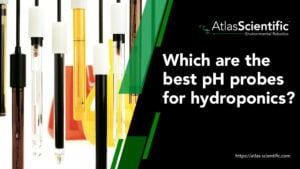
Best pH Probes For Hydroponics in 2025 – A Complete Buying Guide
Finding the best pH probe for hydroponics can make or break your growing success. In hydroponics, maintaining the correct pH is essential because it directly
# Type at least 1 character to search # Hit enter to search or ESC to close

No products in the cart.

No products in the cart.
Product Categories

To raise humidity in a grow tent, you can use a humidifier, reduce airflow or ventilation, place open trays of water, or mist plants to increase moisture levels. Additionally, maintaining a balanced temperature helps retain humidity, and using larger water containers can also enhance evaporation rates.
Growing plants indoors such as mushroom cultivation in a grow tent offers numerous advantages, including control over environmental factors like temperature, light, and humidity. While many growers focus on lighting and nutrients, maintaining proper humidity levels is equally crucial for plant health and optimal growth.
In this guide, we’ll explore various methods to raise humidity in your grow tent, ensuring your plants thrive in their controlled environment.
Humidity refers to the amount of water vapor present in the air. In grow tents, we typically measure relative humidity (RH), which is the percentage of water vapor in the air compared to the maximum amount the air can hold at a given temperature.
Proper humidity levels are crucial for several reasons. Plants release water vapor through their leaves in a process called transpiration, which helps them move nutrients and water from roots to leaves. Adequate humidity helps plants absorb nutrients more efficiently and regulates their temperature through transpiration.
Many plants grow faster and healthier in environments with appropriate humidity levels. Additionally, proper humidity can help prevent certain fungal diseases, although extremely high humidity can promote others.
Ideal humidity levels vary depending on the plant species and growth stage. Seedlings and clones generally require higher humidity levels, around 70-80% RH. During the vegetative stage, plants typically thrive in 50-70% RH.

As plants enter the flowering stage, humidity should be gradually reduced to 40-50% RH, and further lowered to 30-40% RH in late flowering to prevent mold issues.
One of the most effective and controllable ways to increase humidity is by using a humidifier. When selecting a humidifier, choose one appropriate for your tent size. Ultrasonic or evaporative humidifiers work well in grow tent environments. Position the humidifier near an intake fan or in a corner of the tent for even distribution of moisture.
Regular maintenance is crucial when using a humidifier. Clean it frequently to prevent mold growth and mineral buildup. Using distilled or reverse osmosis water can minimize mineral deposits and extend the life of your humidifier. While humidifiers offer precise control over humidity levels and can cover large areas effectively, they do require an initial investment and ongoing maintenance.
For smaller grow tents or as a quick solution, using a spray bottle to mist the air can temporarily increase humidity. Use a fine-mist spray bottle filled with room temperature water and mist the air above and around plants, taking care to avoid direct spray on leaves.
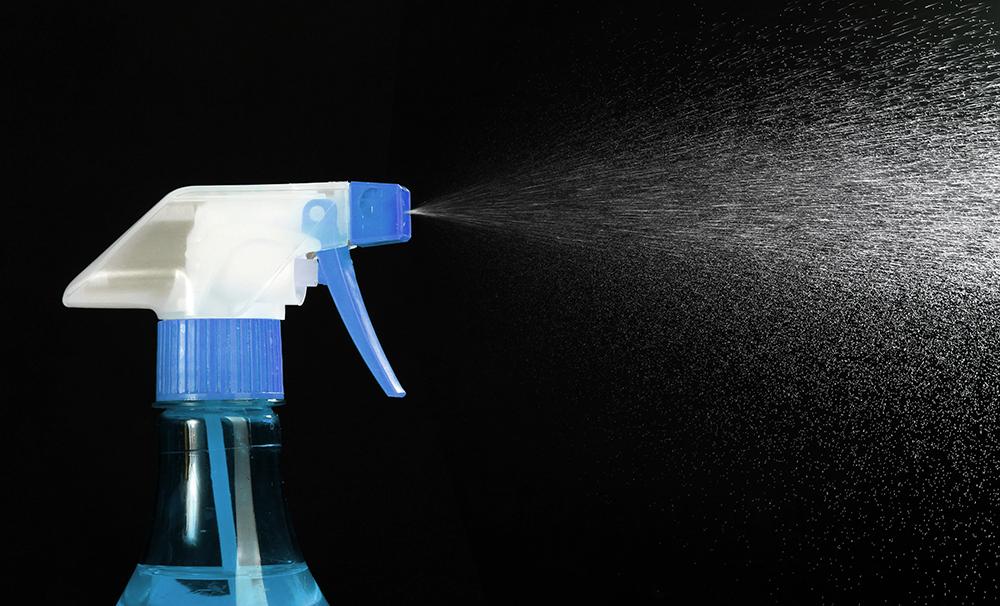
While this method is inexpensive and quick, it’s a short-term solution that can be labor-intensive for larger spaces. Caution must be exercised to avoid overwatering.
Placing open containers of water in your grow tent can naturally increase humidity through evaporation. Use shallow trays or buckets filled with water and place them on the floor of your tent or on raised platforms. To enhance the effectiveness of this method, add a small fan near the water surface to increase the evaporation rate.
This simple and cost-effective approach requires no electricity, but it offers less precise control over humidity levels and may not be sufficient for larger tents or significant humidity increases.
Similar to water trays, hanging damp towels or cloths can increase humidity through evaporation. Soak towels or cloths in water and hang them in your grow tent, ensuring they don’t touch plants or electrical equipment. Replace or re-wet them as they dry out.

This method is inexpensive and can be strategically placed for targeted humidity increase, but it requires frequent attention and may not provide significant humidity increase in larger spaces.
Lowering the temperature in your grow tent can indirectly increase relative humidity. Adjust your cooling system to lower the overall temperature slightly, but monitor plants closely to ensure the temperature doesn’t drop too low for their needs.
While this method doesn’t require additional equipment, it may not be suitable for all plant species and can affect other aspects of plant growth.
Adding more plants to your grow space can naturally increase humidity through transpiration. If space allows, introduce more plants to your tent, considering species that thrive in high humidity environments.
This natural method benefits the overall growth environment without requiring additional equipment. However, it may not be feasible in already crowded tents and can complicate other aspects of plant care such as airflow and light distribution.
A swamp cooler, or evaporative cooler, can increase humidity while also cooling the air. Place a swamp cooler in or near your grow tent, ensuring proper ventilation to prevent stagnant air.
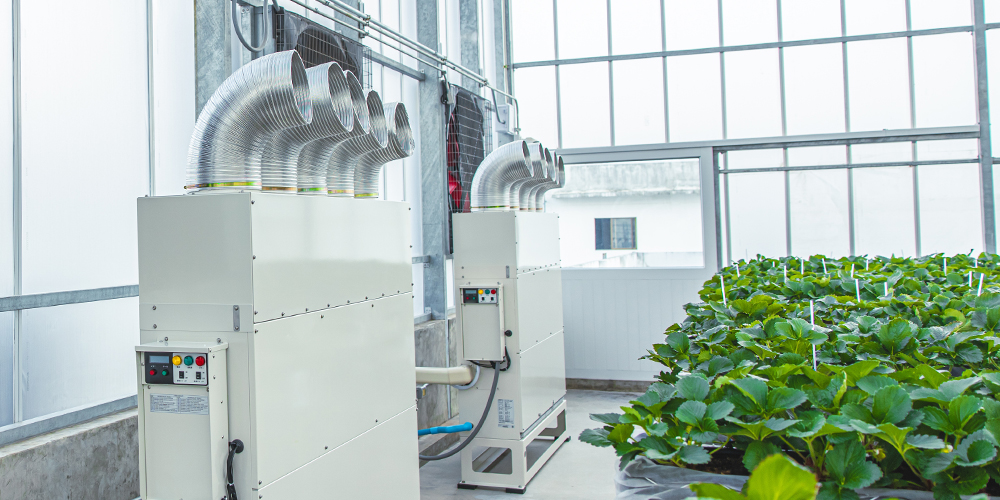
This dual-purpose solution is particularly effective in dry climates. However, it’s less effective in already humid environments and can be costly and require significant space.
Ensuring your grow tent is properly sealed can help maintain higher humidity levels. Check for and seal any leaks or gaps in your tent using duct tape or specialized tent repair tape for small holes. Ensure zippers and vents close properly.
While this helps maintain a consistent environment and improves overall tent efficiency, it may require some initial effort to find and seal all leaks. Be cautious not to over-seal, as some air exchange is necessary for plant health.
Accurately measuring humidity is crucial for maintaining the optimal environment for your plants. While there are various methods to increase humidity, without proper measurement, you’re essentially operating blind.
Precise humidity measurement is vital because even small variations can significantly impact plant health and growth. Inaccurate readings might lead to overcompensation or neglect, potentially harming your plants. Moreover, different stages of plant growth require different humidity levels, making accurate measurement essential for adjusting conditions as your plants mature.
There are several types of humidity sensors available, each with its own advantages:
1. Capacitive sensors: These are widely used due to their accuracy and stability over a wide range of humidity levels.
2. Resistive sensors: These are less expensive but may be less accurate at extreme humidity levels.
3. Thermal conductivity sensors: These are highly accurate but more expensive and typically used in industrial applications.
4. Optical sensors: These use light absorption to measure humidity and are known for their precision and quick response times.
Atlas Scientific offers high-quality, professional-grade humidity sensors that are well-suited for grow tent applications. Their sensors typically use capacitive sensing technology, which provides excellent accuracy and reliability.

Key features of Atlas Scientific humidity sensors include:
To get the most accurate and useful humidity readings in your grow tent:
1. Sensor placement: Position sensors at various heights in your tent, with a focus on plant canopy level where the environment most directly affects your plants.
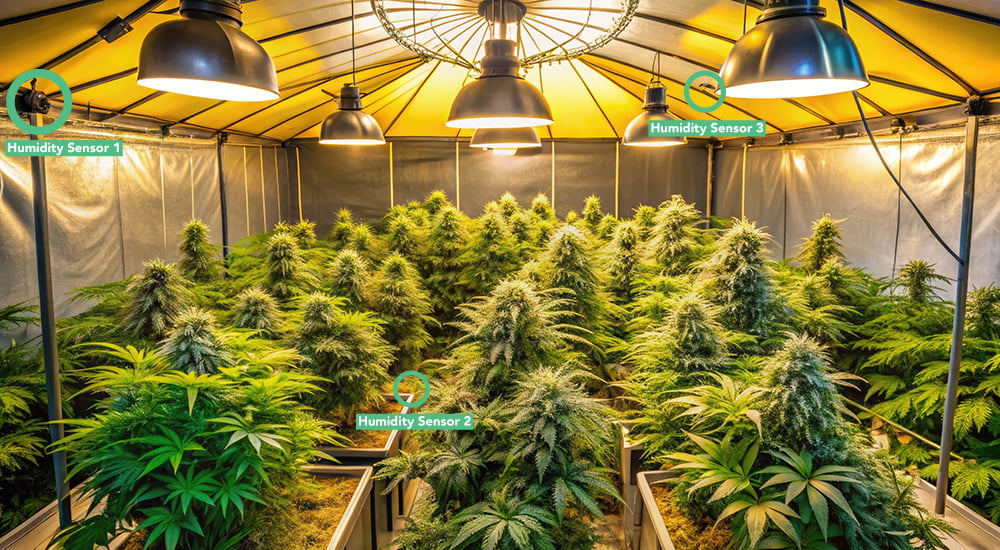
2. Multiple measurement points: Use several sensors throughout larger tents to account for potential microclimates.
3. Regular calibration: Follow the manufacturer’s guidelines for calibration to ensure continued accuracy.
4. Data logging: Implement a system to log humidity data over time. This allows you to track trends and make informed decisions about environmental control.
5. Integrated systems: Consider using an environmental controller that can automatically adjust humidifiers, dehumidifiers, and ventilation based on sensor readings.
6. Avoid interference: Keep sensors away from direct water spray, intense light, or heat sources that could affect their readings.
7. Maintenance: Regularly clean sensors according to manufacturer instructions to prevent dust or mineral buildup that could impact accuracy.
By implementing these measurement strategies and utilizing high-quality sensors like those from Atlas Scientific, you can maintain precise control over your grow tent’s humidity levels. This level of accuracy allows you to create the ideal environment for each stage of your plants’ growth, potentially leading to healthier plants and higher yields.
Regardless of the methods you choose to raise humidity, consistent monitoring and control are crucial. A hygrometer is an essential tool for measuring humidity in your grow tent. Place hygrometers at various heights in your tent for comprehensive readings. Consider using a digital hygrometer with data logging capabilities for trend analysis.
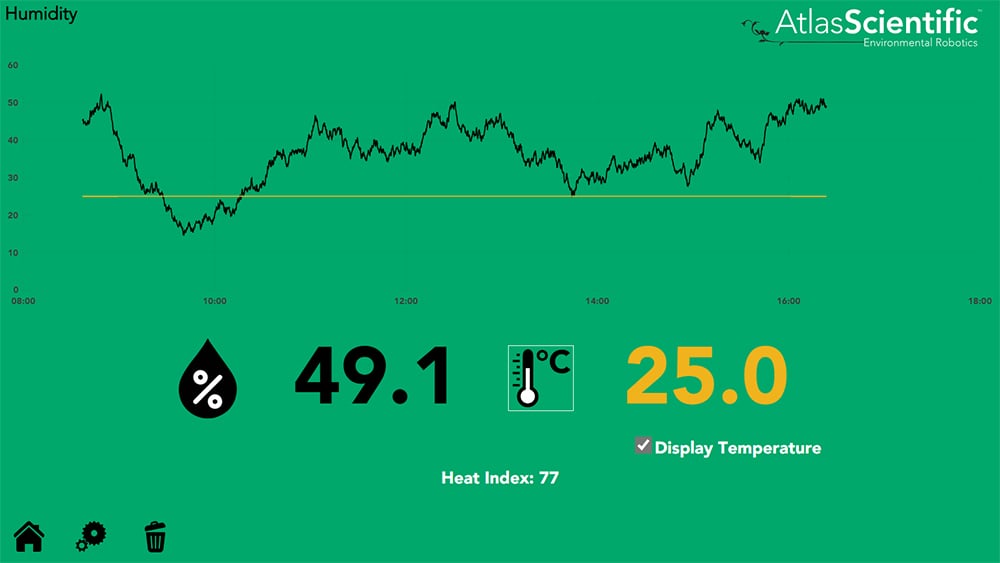
For precise control, especially in larger setups, an environmental controller can be invaluable. These devices can automatically adjust humidifiers, fans, and other equipment to maintain ideal humidity levels. Some advanced controllers can be monitored and adjusted remotely via smartphone apps, allowing you to manage your grow tent environment from anywhere.
While increasing humidity is often beneficial, it’s important to be aware of potential risks associated with excessive moisture. High humidity can create conditions favorable for fungal growth, leading to mold and mildew issues. Some pests also thrive in humid environments, potentially leading to infestations. Extremely high humidity can interfere with nutrient uptake, causing nutrient lockout. Additionally, overly humid conditions can lead to waterlogged soil and root rot.
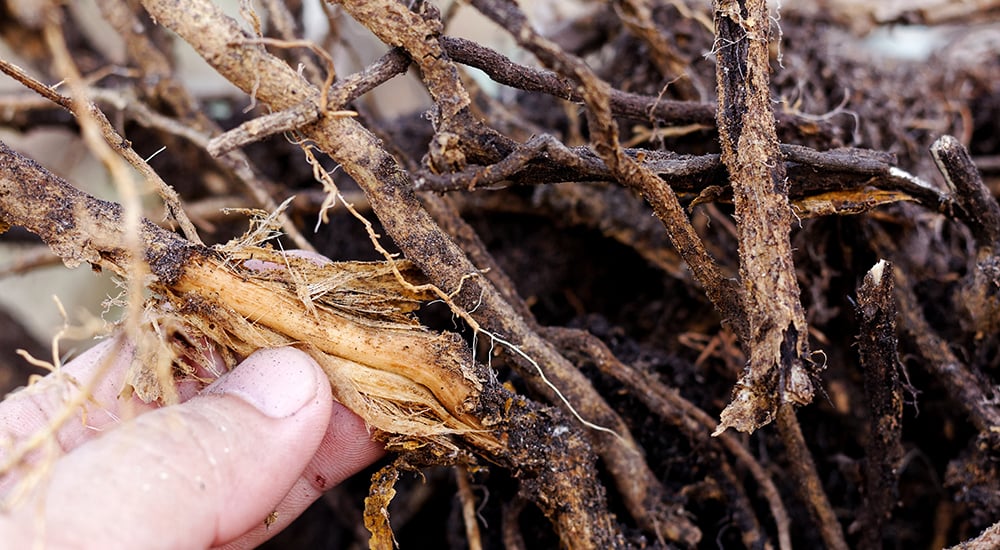
To mitigate these risks, ensure proper air circulation with fans and maintain a slight temperature difference between day and night to prevent condensation. Regularly monitor your plants for any signs of stress or disease, adjusting humidity levels as needed.
Maintaining optimal humidity levels in your grow tent is crucial for healthy plant growth and development. Remember, the key to success is consistent monitoring and adjusting your approach based on your plants’ needs and growth stages. Investing in quality measurement tools, such as Atlas Scientific humidity sensors, can greatly improve your ability to maintain precise environmental control.
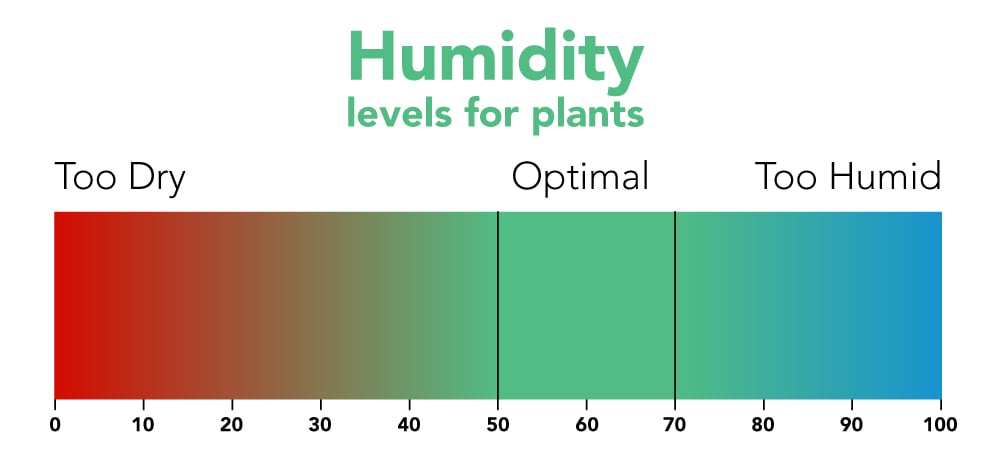
If you would like to learn more about humidity control or what humidity sensors we have to offer, do not hesitate to contact the world-class team at Atlas Scientific.

Finding the best pH probe for hydroponics can make or break your growing success. In hydroponics, maintaining the correct pH is essential because it directly

The fastest way to reduce ammonia levels in a fish tank is to perform partial water changes, temporarily stop feeding fish, use chemical filtration, increase
Notifications